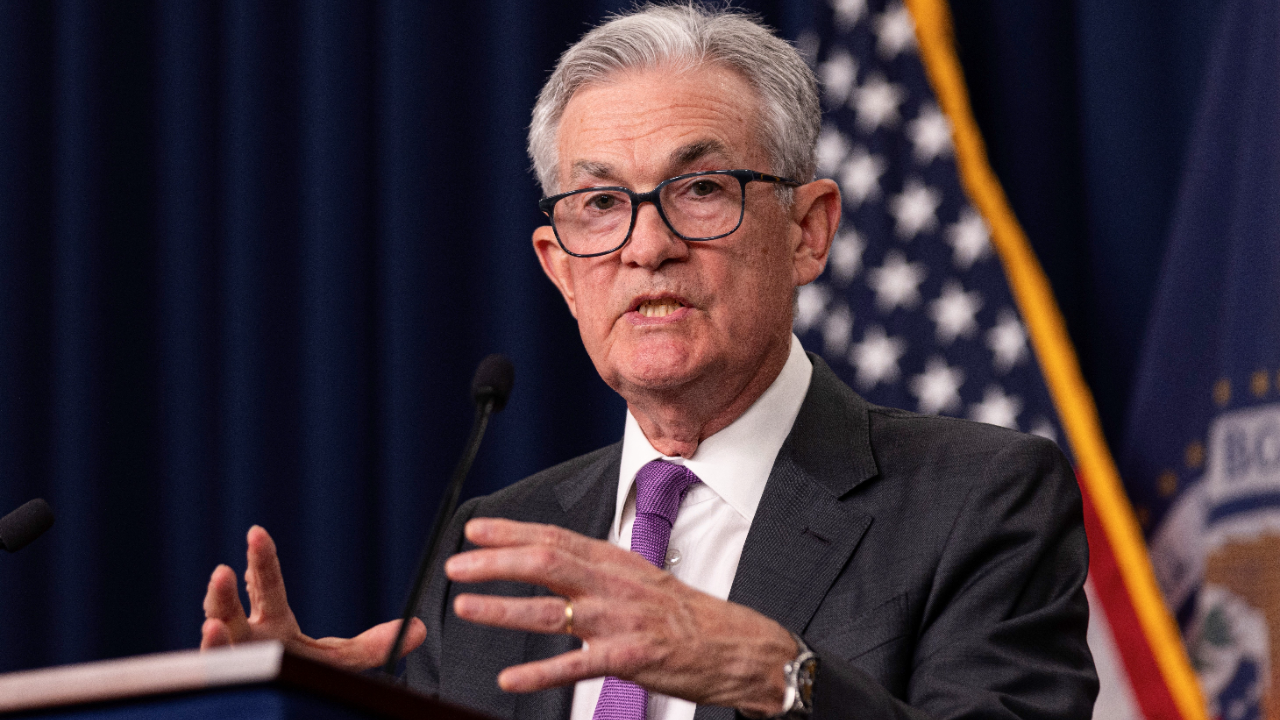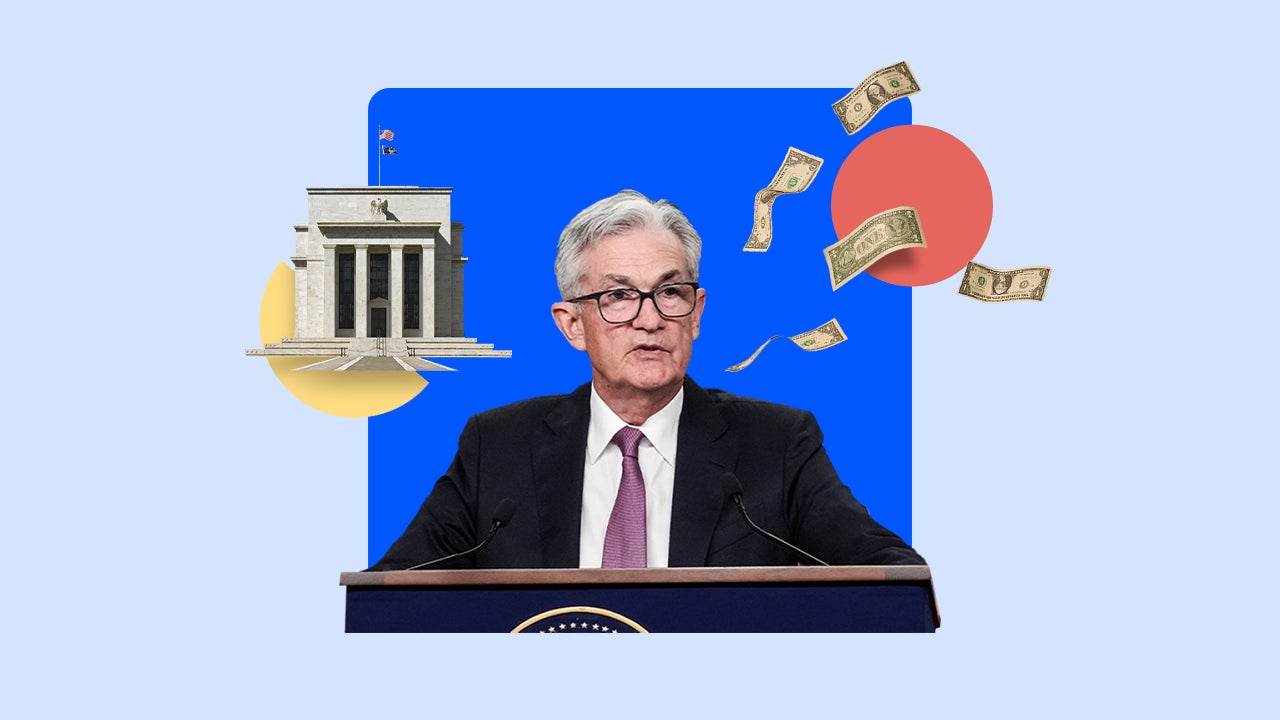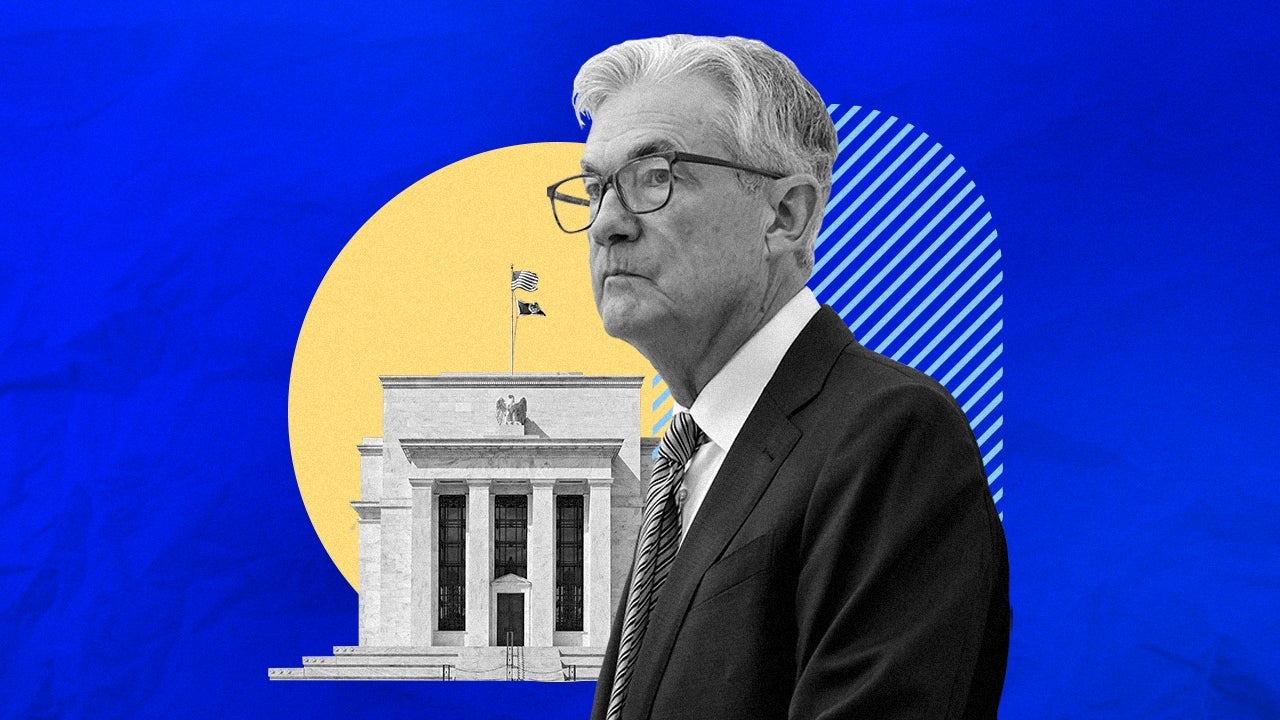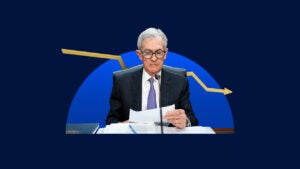Fed leaves interest rates unchanged, sees borrowing costs staying higher for longer

Federal Reserve officials left interest rates alone for the second time this year but stopped short of saying they’ve done enough to completely conquer inflation, with most officials on guard to raise interest rates one more time.
The Federal Open Market Committee (FOMC) kept its key borrowing benchmark in its current target range of 5.25-5.5 percent — already the highest level in 22 years. The move gives Fed officials more time to assess the impact of the rate moves they’ve already approved: a total of 11 hikes worth a whopping 525 basis points in just an 18-month span, marking the fiercest inflation fight for the Fed in four decades.
But the odds of rates staying there for much longer are slim. All but seven policymakers say the Fed’s inflation fight will require one final rate increase this year, according to projections updated in September. Those estimates imply that rates will finish 2023 at 5.5-5.75 percent.
The Fed is also expecting to cut rates by a smaller amount next year — half a percentage point, down from projections last June that outlined a full percentage point worth of cuts. For consumers, the message is clear: Higher rates aren’t going anywhere anytime soon.
Officials have been raising interest rates to calm a rapid post-pandemic burst in demand that, amid supply shocks, sent the prices of items consumers both need and want soaring. Inflation has majorly improved under the Fed’s watch, with price increases slowing from an eye-catching 9.1 percent high in June 2022 to 3.7 percent in August. So far, the slowdown has also come with minimal economic pain, as consumption remains strong and job growth stabilizes.
The Fed has an incentive to get the job right: They know from experience that the U.S. economy — and consumers — will be better off if they can stabilize prices as quickly as possible.
“It can be a miserable period to have inflation constantly coming back and the Fed having to tighten again and again,” said Fed Chair Jerome Powell at a press conference with journalists. “The best thing we can do for everyone is restore price stability.”
The ultimate question is whether officials have already done enough and if future moves are even necessary. Officials have plenty to point to, no matter which way they lean. Some inflation gauges are showing that price pressures remain sticky. When excluding food and energy, prices popped at a faster pace than expected in August from the prior month.
Yet, borrowing costs are also now taking the most steam away from the economy in over a decade. Experts also say it often takes months, if not a year or more, for each rate hike to make its way through all channels of the economy, starting first in financial markets and hitting the job market last.
Along the way, the Fed is juggling plenty of other headwinds — from a possible government shutdown and rising gasoline prices, to the return of student loan payments and a United Auto Workers (UAW) strike — that could combine to make the inflationary and economic picture murkier.
Consumers will want to take this time to assess their finances in the face of rising rates, just how the Fed is currently taking a breather to study the economy.
“Economic growth was seen as ‘solid’ and job gains ‘slowed’ but ‘remain strong,’” says Greg McBride, CFA, Bankrate chief financial analyst, referencing key changes that the FOMC made in its post-meeting statement. “This is not the backdrop where the Fed needs to worry that one more interest rate hike will topple the economy into recession.”
The Fed’s rate pause: What it means for you
Savers
The Fed is closer to the end of its rate hikes than the beginning, meaning banks may stop lifting yields before too long. But the wins for savers don’t stop when the Fed quits raising rates — especially if you’re keeping your cash in an account where your money is rewarded.
As of Sept. 20, yields on the 10 best high-yield savings accounts for September are all eclipsing the current rate of inflation, ranging from a high of 5.25 percent to a low of 4.65 percent. Those returns help your money grow at a faster pace than prices are rising. Deposits insured by the Federal Deposit Insurance Corporation (FDIC) provide coverage up to $250,000 per depositor, per institution and per ownership category. And assuming inflation keeps slowing this year, your payout will keep growing by an even wider margin.
“The real win for savers is that rates are going to stay high with the expectation that inflation is going to continue to come down,” says Greg McBride, CFA, Bankrate chief financial analyst. “That’s a scenario of improvement for savers, even if rates don’t go up anymore.”
Not all banks on the market are offering yields that generous. The average yield on a savings account has grown by eight fold since May 2022, rising from 0.06 percent to 0.48 percent as of Sept. 13, the highest since 2007, according to national Bankrate data. But that’s still roughly 10 times less than what many high-yield savings accounts are offering. Some savers stand to earn even more than that — possibly 400-500 times more if they’re banking with the nation’s biggest financial firms, such as Chase or Bank of America.
But while higher returns are the clear benefit to saving right now, they’re not necessarily the reason consumers should sock money away. With the economic outlook uncertain, saving for emergencies is crucial. A Bankrate survey of economists from July put the odds of a recession within the next 12 months at 59 percent — suggesting a downturn remains the most probable scenario. If your savings account is housing your rainy-day fund, make sure the funds are liquid and accessible in the event of an unexpected expense.
And if you’ve already put away at least six months’ worth of expenses, consider locking in a certificate of deposit (CD). Yields on longer-term CDs with durations ranging from two to five years are likely to be the first to drift lower — and many are already starting to — as soon as the Fed signals it’s about done raising rates.
Borrowers
An emergency fund is the buffer between being able to cover an unexpected expense — and having to turn to a high-interest credit card to afford it.
Credit card borrowing is more expensive than ever as the Fed has been lifting rates. The national average credit card annual percentage rate (APR) notched a new record high of 20.71 percent on Sept. 13 and have hovered at never-before-seen levels since November, according to Bankrate data.
The Fed’s rate pause gives borrowers some extra time to make a game plan for paying off their debt. That step may include hunting for a balance transfer card that has a 0 percent or low-rate APY introductory offer. The longest offers, however, give consumers just 21 months to pay off their debt before their APR skyrockets again.
Consumers may also want to leverage the brief reprieve to shop around for the best rate if they’re about to make a big-ticket purchase. The Fed’s rate hikes translate to higher borrowing costs for almost every type of loan, from car loans and credit cards to variable-rate mortgages and personal loans.
But even when the Fed skips a rate hike or goes on pause, borrowing costs could keep edging up. Lenders often adjust rates within one to two billing cycles, and 11 total rate hikes in 18 months are making their way through the pipeline. Higher rates also tend to make lenders more cautious about approving new loans, meaning some consumers could see rates rise even higher depending on their credit score and history.
And the bottom line is, a Fed on pause will do little to alter the pricey borrowing environment that’s been in place since the Fed began raising interest rates in 2022.
Homebuyers
Prospective homebuyers had it tough long before mortgage rates charted their massive ascent, as they grappled with massive property price increases and a depressed housing supply.
Now, however, mortgage rates have risen to the highest since December 2001, adding insult to injury and pricing would-be homebuyers out of their purchase even more.
A $500,000 30-year mortgage would’ve cost $2,089 in principal and interest back when rates were at a record low, according to Bankrate’s mortgage calculator. That monthly payment would now be $3,465 — a 66 percent jump — if a homebuyer locked in a 30-year fixed-rate mortgage at its current 7.41 percent level.
After losing momentum in early 2022, mortgage rates started picking up again in the summer of 2023, jumping from 6.52 percent in May to 7.42 percent on Sept. 6.
With limited housing stock, those mortgage rates have done little to cool housing prices. Prices have increased for five straight months, according to the Case-Shiller home price index. Meanwhile, more than half of metro areas saw home price gains in the second quarter of 2023, data from the National Association of Realtors (NAR) shows.
Rent prices have been rolling over every month since their May 2023 peak, but elevated home prices risk keeping a floor on how much lower rents can keep falling as prospective buyers wait on the sidelines for relief. Rent prices rose 7.8 percent in August from a year ago, data from the Bureau of Labor Statistics shows.
Americans will find limited success timing any market, but if buying a home right now doesn’t work for your financial situation, consider taking advantage of the time to take steps that put you on the right path toward homeownership. Find ways to boost your income, pay off debt and build your credit, so you’re eligible for lenders’ best offers when the time comes.
Slower growth and lower inflation will pave the way for cooler mortgage rates, but one thing is clear: The price of buying a home is unlikely to fall to the pandemic-era lows anytime soon.
Investors
After a bumpy 2022 when stocks posted the worst performance since the 2008 financial crisis, investors appear to be looking past the rapid run-up in interest rates. The S&P 500 is up about 16 percent since the start of the year, and stock prices are only down about 7 percent from their all-time highs.
But that optimism might be because the Fed appears to be accomplishing the mission of its rate-hiking campaign with minimal casualties — at least so far. Inflation has been falling, the labor market has been gradually cooling and the consumer has remained surprisingly resilient, helping the economy continue to dodge a recession. But it all means those hopes could come crashing down the moment the U.S. economy doesn’t look so strong.
That’s not to say it’s a guarantee. While a recession remains the most probable possibility, economists are more hopeful than ever that the Fed can gradually cool inflation without harming the financial system. Yet, it’s a scenario investors should brace for — especially because it could cause asset prices to get bumpy.
Yet, day-to-day volatility shouldn’t deter the long-term investor. With a diversified portfolio of investments, market participants can stay the course and tune out the market’s monster of the day.
Is the Fed almost done raising interest rates?
In a notable move, the Fed upgraded its estimates for how much the U.S. economy will grow in 2023, with new projections showing a 2.1 percent growth rate, up from a 1 percent estimate just last quarter.
Policymakers also slashed their unemployment rate projections through 2025 and gave a similar green light for the job market in their first look at how they’re viewing the economy in 2026. Now, the median estimate calls for an unemployment rate of 3.8 percent in 2023 — where joblessness currently stands. The share of Americans unemployed and looking for work is expected to tick up slightly to 4.1 percent by the end of 2024, down from an original estimate of 4.5 percent.
Those projections guided the Fed into keeping one more rate hike on the table for this year. Yet, Powell reiterated that the path is far from certain, and the FOMC has not yet come to a consensus about what to do with borrowing costs at future meetings.
“Economic activity has been stronger than we expected,” Powell said. “We are fairly close to where we need to get. It’s just a question of reaching the right stance.”
The next phase for the Fed involves determining the level at which rates are “sufficiently restrictive” enough to bring inflation back down. Answering that question involves figuring out what level rates have to hit to adequately slow the economy, often referred to as the “neutral rate” of interest.
“You know sufficiently restrictive only when you see it,” Powell said, referencing how officials never know for sure where the true “neutral” rate lies.
Throughout press conferences since the Fed started raising rates, Powell has repeated that this era is likely to require a period of “below-trend growth.” So far, that’s yet to materialize.
That could be because the Fed is succeeding at reducing inflation without harming the economy or the job market, but it would be the most optimistic reason why. It may just be because rates at this level aren’t as restrictive as they usually are when they reach this level. Powell said it’s possible that the so-called “neutral rate of interest” has risen, at least in the near term.
The Fed also doesn’t need to raise rates to slow the economy. If inflation falls and interest rates stay at their historically high level, the “real” cost of money will go up, packing a greater punch on demand.
Some economists aren’t convinced the Fed will have to raise interest rates again. The Fed is dealing with challenges around its own communication, too. If officials definitively signal that they’re done, financial conditions could loosen, reigniting higher inflation. Rather, signaling another rate hike could be more just a means of appearing tough and keeping their options open.
“There are significant risks to the economy on the horizon with the auto workers strike in motion and the potential for a government shutdown looming,” says Charlie Ripley, vice president for the Minnesota-based Allianz Investment Management. “Both these events could sideline the Fed from another hike this year. Thus, there is a decent case building that the last rate hike during this cycle may already be behind us.”






